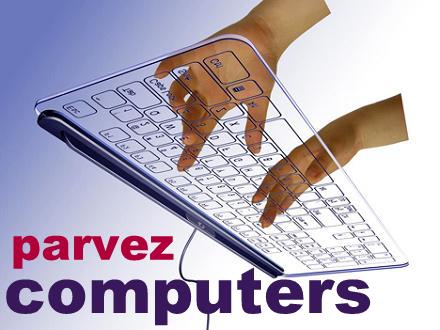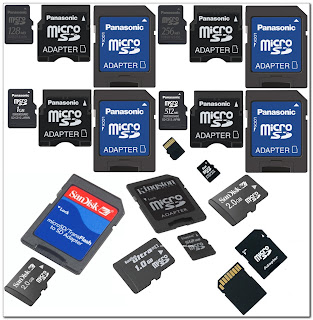Monday 31 December 2012
how to protect your gmail account from hackers
Most of the people use Gmail for sending emails. We have precious
information stored in our Gmail account. So Gmail would be the target
for hackers being hacking it. Gmail developer team has given us
wonderful security option by enabling the 2-step Verification,
By enabling the 2-step verification from you Gmail account makes your account more secure by making you to login into Gmail by 2 step. While logging in into the Gmail account, Gmail send you the security code to your mobile phone and asks you to enter that code in Gmail login page. This makes sure that only the mobile phone carrier can able to know that code. So your account cannot be Hacked if someone tries to hack your account from somewhere else
how to enable step by step
By enabling the 2-step verification from you Gmail account makes your account more secure by making you to login into Gmail by 2 step. While logging in into the Gmail account, Gmail send you the security code to your mobile phone and asks you to enter that code in Gmail login page. This makes sure that only the mobile phone carrier can able to know that code. So your account cannot be Hacked if someone tries to hack your account from somewhere else
how to enable step by step
- Log in to your Gmail Account,
- Click Account at the top right,
- Click Edit on 2-step verification,
- Now Click Start Setup,
- selcet your country and add your mobile number,
- Select the method of verification, SMS option is by default and it is most recommended one
- Just click Send Code
- Now Google will send you Text in your mobile with Verification Code
- Now click Next, and NextNote this point after 2-step Verification
- Your Another Application and Connected account will not be working, you need to re-invoke that on Final 2-step Verification or do it later!
- If your Primary Moblie is lost then you cannot able to login to Gmail so set Backup Mobile Number
- Backup Verification Code is the another way to Recover your Account Please Download and Note that number and keep it safely somewhere it is accessible for you, like your Wallet. Each code can be used only once.
- I recommend you to read everything and make a note of it.
Sunday 30 December 2012
how speedup your internet connection
- goto Start >> RunType gpedit.msc
- This opens the Policy Editor
- Now, Local Computer Policy >> Computer Configuration
- Then, Administrative Templates >> Network
- Now, click on QOS Packet Scheduler
- Now, on Right hand side
- Double Click Limit reservable bandwidth
- Now in Setting Tab
- It says : Not Configure
Reality : " The Explain Tab " says "By default, the Packet Scheduler limits the system to 20 percent of the bandwidth of a connection"
- It says : Not Configure
Saturday 22 December 2012
Tuesday 18 December 2012
Sunday 9 December 2012
Saturday 1 December 2012
computer maintance tips
Eleven Tips to Keep your Computer Running Smoothly
1. Never, never, turn your computer off with the power switch until Windows has shut down. The one exception to this rule is when your computer locks up and your hard drive is not running (hard drive light is not blinking). In this situation, you can turn the power off without harmful effects to the hard drive. As cutting the power can also result in lost data or Windows files, you should only do this when you have to.
Following this rule will prevent permanent hard drive defects caused by the hard drive heads contacting the surface of the drive disc, and it will prevent a host of Windows problems.
Whenever possible, recover from crashes by pressing the Ctrl + Alt + Delete keys at the same time. Press them again to reboot your computer.
2. I highly recommend that you purchase an UPS (uninterruptible power supply) for your computer. This will keep your computer from crashing during power outages, and will protect your computer from low and high voltage occurrences.
An UPS is far superior to a surge protector and will save your computer from almost any type of power disaster. (See #1 above for what happens when your computer crashes.)
This is an especially important thing to have if you live or will be living in old houses or apartments. The reason for this is the electrical work in apartments like those can often have faulty wiring that may short out resulting in a damaged computer or loss of information for you. Why have a surge protector when you could put that money towards a UPS?
3. Backup, backup, backup, any data you cannot afford to lose to at least two separate physical drives. So backup data to external hard drives, USB/thumb drives, CD-RW's etc.
The time to backup is when you create something you can't afford to lose. Don't wait until tomorrow.
If you have mistakenly deleted any files, documents, photos, or even crashed your hard drive, and you want to recover your data, please see our article, "Best Data Recovery Programs for Windows and Macs".
4. Run Scandisk and Defragment at least once a month. This will keep your hard drive healthy and prevent crashes. Alternatively, purchase a disk utility program and use it to keep your hard drive healthy. These programs are part of Windows and can be found at Start/Computer then Right click on the drive you want to fix. Choose Scandisk or Defragment from the menu.
5. Never unplug peripherals from the computer when it is powered up. Unplugging with the power on can short out the connector socket or the motherboard. The only exception to this rule is if you know a peripheral is "hot pluggable". If you do not know what "hot pluggable" means then ignore this exception.
6. Do keep at least 300 MBs of your C: drive free for Windows to use. If you use Windows XP, Vista, or WIndows 7 then you should have 400-600 MBs of free space on your C: drive.
If you do not have enough free space you will choke Windows and it will start dumping data to your hard drive (or designated virtual drive), or it will just get really, really, slow (you will see your hard drive light on all the time and your computer will be locked up until the drive stops spinning).
Use the ADD/Delete tool in the Windows Control Panel to delete unneeded programs from your drive.
You can also use disk/utility cleaning programs and speed-up programs to get rid of clutter on your hard drive and to speed up your system, we recommend using a PC speed up program like PC Cleaner. See our review of PC Cleaner for more information.
Also another great way to enhance overall computer performance is with ActiveX controls.
7. Do not let a lot of programs load up when you start your computer. They use valuable memory and Windows Resources (Windows internal workspace).
All programs in your Windows System Tray (in the lower left of your screen) are running on your computer. Close them if you don't need them or run them and configure them not to load when you boot up.
Other programs running in the background can be found by pressing Ctrl + Alt + Delete at the same time.
8. Do use an antivirus checker regularly. Everyone should have an antivirus checker that boots up when their computer starts. The best type of protection is continuous monitoring from a dedicated anti-virus program (for example Ad Aware Pro, Panda AntiVirus Pro, BitDefender Total Security, Spyware Doctor with AntiVirus). Also, make sure the anti-virus program is set to update automatically. These programs must regularly update their virus definitions to provide the best defense against new viruses and other malware..
9. If you have a high speed Internet connection, you need a firewall program. A firewall program keeps those who want to hijack your computer from gaining access to your system. You really do not want someone else running your computer.
All current versions of Windows come with a built in firewall program. You can access the Windows firewall at Start/Control Panel/Internet Connections/Windows Firewall. This program should always be running unless you choose to use a different firewall program.
For additional protection, you should consider Internet security software that has firewall programs and other web security tools built-in e.g. PC Tools Internet Security, Panda AntiVirus Pro, and BitDefender Total Security have firewall, antivirus, and other security programs bundled together in one package.
Case in point: When I am online 10 hours or more with my DSL connection, my computer is usually attacked by a hacker at least once.
Do not think you are safe from hackers!! Hackers use search programs to seek out computers at random. Get a firewall program and use it.
10. Keep track of the software disks you receive with your computer and new peripherals. These disks contain valuable software drivers and programs for Windows and are needed when Windows must be reloaded. Keep these disks and your Windows software disks in a safe, dry, place -- you never know when you will need them.
11. Make sure Windows Update is set to Automatically Update your computer. Windows is frequently updated by Microsoft to prevent virus and malware attacks, to improve Windows performance, and to provide new features. Access Windows Update at Start/Control Panel/System/ Security/Windows Update.
Keeping these computer maintenance tips in mind will keep your PC in top shape and keep you from having an expensive repair bill. If you would like to comment on this article see the comment box below.
For network or computer problems at the office, maintenance may be a bit more tricky and complex. Your IT guys can probably help with anything you can’t figure out, though – these Burlington IT consultants, for example, cover everything from network support to data backup. It never hurts to give your IT support a call if you’re stuck.
Monday 26 November 2012
Friday 23 November 2012
Tuesday 20 November 2012
Sunday 18 November 2012
Saturday 17 November 2012
Thursday 15 November 2012
Subscribe to:
Posts (Atom)

















































